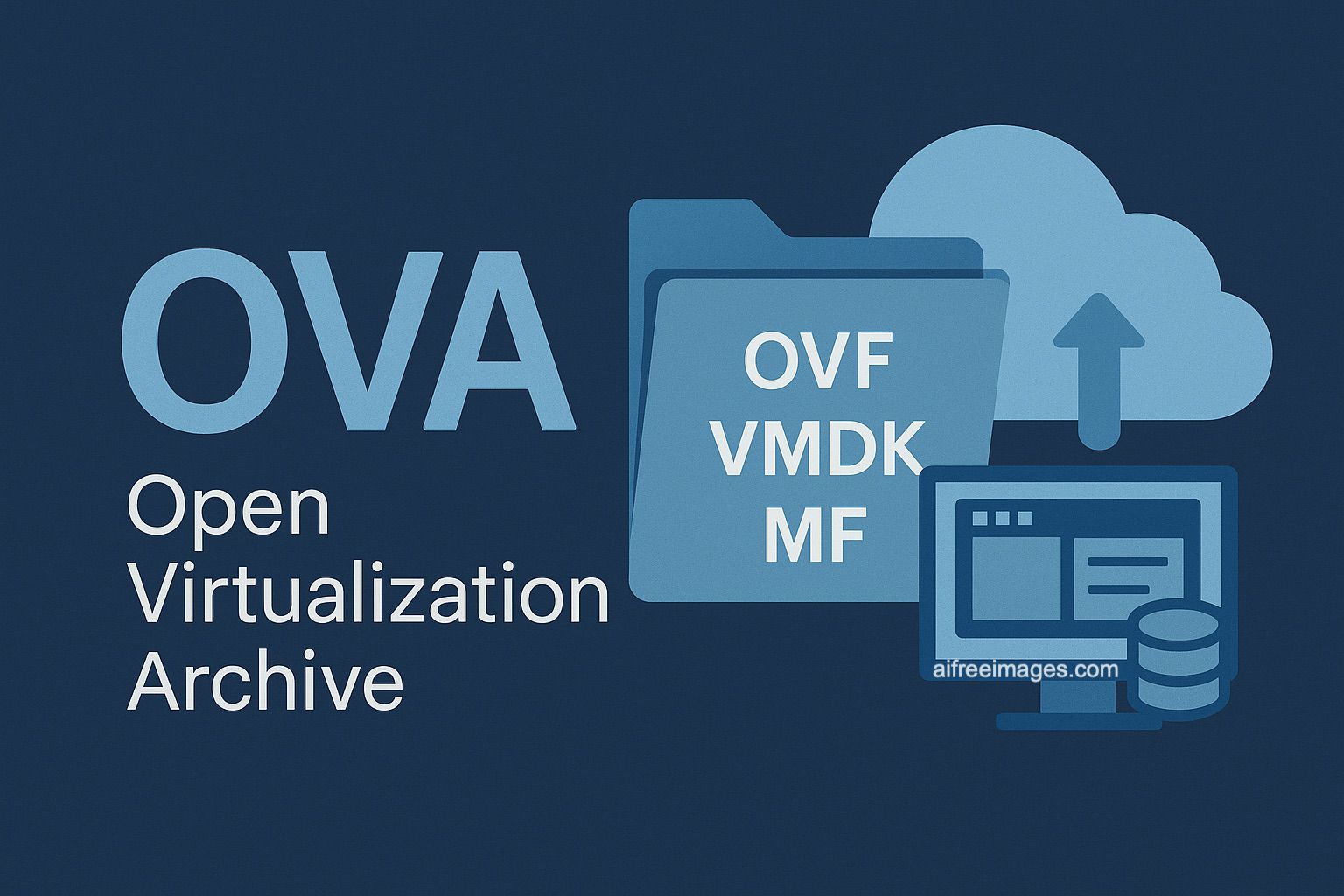In a business world where virtualization is the norm, the OVA format has become the ultimate solution for distributing entire applications and systems in minutes. Here’s what it is, how it works, and why large companies trust it.
If you’ve ever wondered how tech companies distribute complex software so efficiently, or how it’s possible to download a fully configured web server and run it in just minutes, the answer is three letters: OVA. This format, which stands for Open Virtualization Archive, is transforming how organizations deploy and distribute enterprise applications.
What exactly is an OVA?
Imagine you could package an entire computer—with its operating system, installed programs, and customized settings—into a single file that anyone can “open” and use immediately. That’s precisely what an OVA file does: it’s a digital container that includes a complete virtual machine ready to run.
“It’s like a sealed box that contains everything needed to run an application without complicated installations,” explains David Carrero, co-founder of Stackscale (Aire Group), a leading cloud and bare-metal infrastructure company. “You download the file, import it into your virtualization system, and in five minutes, you have a working database server that would normally take days to set up.”
The quiet revolution in companies
The OVA format is behind a quiet revolution in the corporate world. Major companies like VMware, Oracle, and Citrix distribute their most complex products in this format, from virtual firewalls to enterprise backup systems.
The case of pfSense is exemplary. This firewall solution, which traditionally required advanced networking knowledge for installation, is now distributed as an OVA. Companies can download the file, import it into their virtual infrastructure, and have an enterprise firewall running in less than an hour.
Anatomy of a technological miracle
Though it seems magic, the technology behind OVA is elegantly simple. Each file contains four essential components:
The system’s core is an XML configuration file that precisely describes how the virtual machine should operate: how much memory it needs, what type of virtual processor to use, how to configure the network. This file follows international standards set by the DMTF (Distributed Management Task Force), ensuring universal compatibility.
The data is stored in virtual disks, which can come in different formats depending on the manufacturer: VMDK for VMware, VHD for Microsoft, or QCOW2 for Linux systems.
Security is maintained through cryptographic checksums verifying the file hasn’t been altered, and optionally, digital certificates confirming authenticity.
Business success stories
Adopting the OVA format has led to notable success stories. Veeam, a global leader in backup solutions, distributes its virtual appliances as OVAs, enabling companies of any size to implement enterprise backup solutions without specialized staff.
In the education sector, universities like the Polytechnic University of Madrid use OVAs to distribute complete virtual labs to students. “A student can download a fully configured cybersecurity lab with Kali Linux and start practicing immediately,” Carrero notes.
Advantages that make a difference
The main benefit of the OVA format is the elimination of the human factor in complex configurations. Traditionally, deploying an enterprise server required days of specialized work and multiple error points. With OVA, the process is reduced to an automated import.
Portability is another crucial advantage. An OVA created in VMware can run on VirtualBox, and with the right tools, even migrate to platforms like Hyper-V or KVM. This provider independence protects technological investments.
Automatic integrity verification ensures what is downloaded is exactly what the manufacturer distributed, free from malicious modifications or corruptions during transfer.
Real challenges and limitations
However, OVA isn’t without challenges. The main issue is file size—a full enterprise appliance can easily occupy 50GB or more, complicating distribution over slow connections.
Hypervisor dependency can also cause issues. Although the OVF standard promises universal compatibility, in practice, some specific hardware resources don’t translate perfectly across different platforms.
Software licensing presents another hurdle. An OVA may include proprietary software requiring separate licensing, creating legal complexities for organizations.
The future: between containers and clouds
The evolution of OVA faces competition from emerging technologies. Docker containers offer greater lightweight application deployment, while cloud-native templates dominate in public cloud environments.
Nevertheless, industry experts agree that OVA will maintain its relevance. “For complex appliances that require complete operating systems and specific hardware configurations, OVA remains indispensable,” states David Carrero.
The OVF 2.1 specification already includes improvements, such as support for containers and integration with cloud automation tools, indicating a move toward hybrid formats.
Impact on digital transformation
OVA accelerates companies’ digital transformation by democratizing access to complex technologies. Small and medium-sized businesses (SMBs) can now deploy infrastructures that were previously reserved for large corporations with dedicated IT departments.
“We’ve seen companies with 50 employees implement enterprise monitoring solutions in a single afternoon—something that took weeks five years ago,” Carrero remarks, sharing insights with the Stackscale technical team.
Conclusion: simplifying the complex
OVA embodies a fundamental promise of the digital age: making the complex simple. In a world where rapid technological deployment offers a competitive edge, being able to distribute and run complex applications in minutes is not just a technical advantage but a strategic one.
For system administrators, developers, and IT managers, understanding and leveraging OVA capabilities has become an essential skill in today’s tech landscape. Because in the digital economy, those who deploy faster ultimately win.
Source: What is an OVA?

